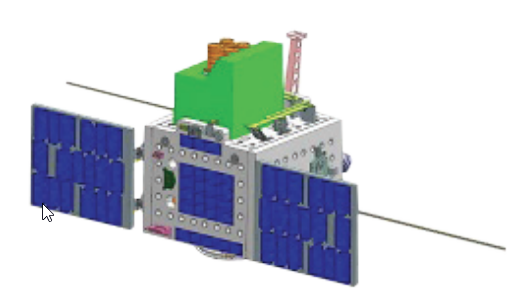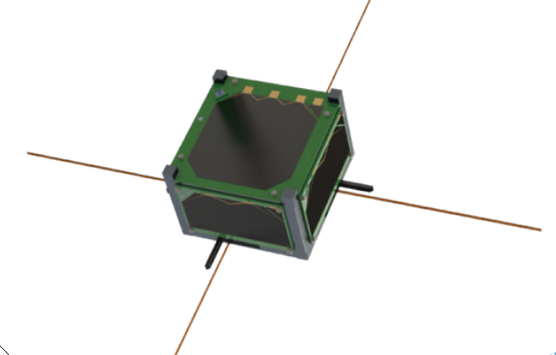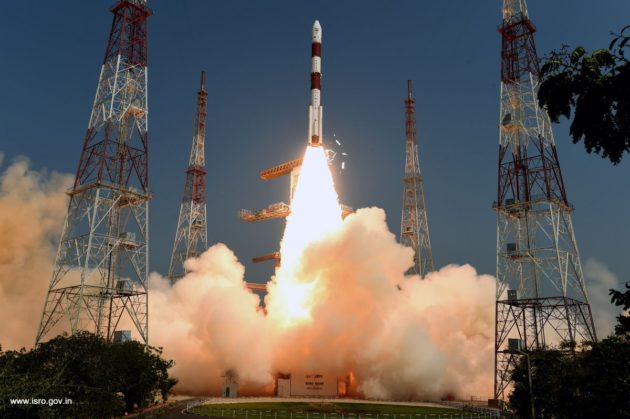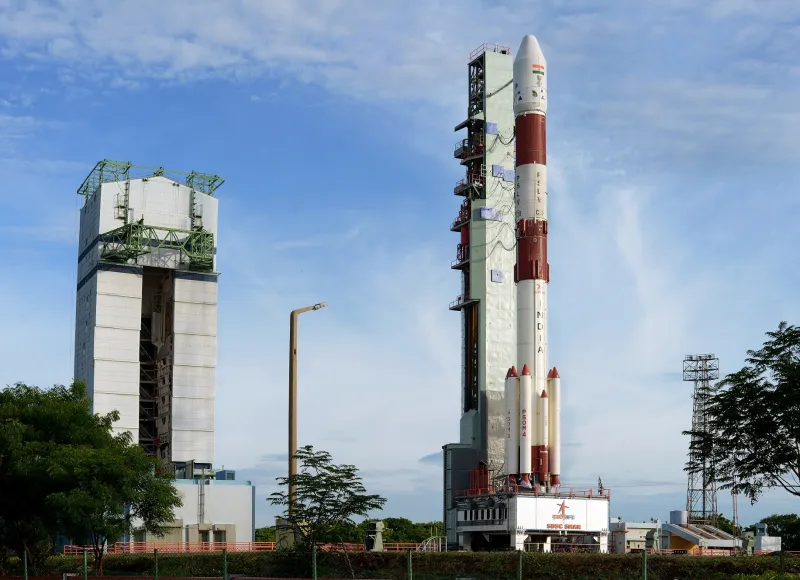Featured image credit: ISRO
Lift Off Time | November 26, 2022 – 06:26 UTC | 11:56 IST |
|---|---|
Mission Name | Oceansat-3 / Earth Observation Satellite 6, C54 |
Launch Provider | Indian Space Research Organization (ISRO) |
Customer | ISRO |
Rocket | Polar Satellite Launch Vehicle (PSLV-XL) |
Launch Location | First Launch Pad, Satish Dhawan Space Centre (SDSC), India |
Payload mass | 960 kg |
Where is the satellite going? | Sun-syncronous orbit (SSO), 737 km (EOS-06), 511 km (passenger payloads) |
Will they be attempting to recover the first stage? | No, this is not a capability of PSLV |
Where will the first stage land? | It will crash into the Indian Ocean |
Will they be attempting to recover the fairings? | No, this is not a capability of PSLV |
Are these fairings new? | Yes |
How’s the weather looking? | N/A |
This will be the: | – 3rd flight of the OceanSat programme – 56th flight of a PSLV rocket – 24th flight of a PSLV-XL configuration – 84th launch from the Satish Dhawan Space Centre – 166th orbital launch attempt for 2022 |
Where to watch | If available, an official livestream will be listed here |
What Does All This Mean?
India is launching OceanSat-3, the third in its set of ocean observation satellites, to a Sun-synchronous orbit atop a Polar Satellite Launch Vehicle (PSLV) rocket. The flight designation is C54.
What Is OceanSat-3?
OceanSat-3 is a multi-sensor ocean observation satellite, expected to operate until at least 2027. The following instruments and/or notable devices onboard are:
- SCAT-3 – OceanSat Scatterometer
- OCM-3 – Ocean Color Monitor
- SSTM – Sea Surface Temperature Monitor
- A-DCS – Advanced Data Collection System

SCAT-3 is an instrument for measuring wind speeds and vectors at sea level. This is a newly developed instrument, operating in the Ku-band (13.515 GHz). It has two conical scanning beams, providing four views of each location from different angles. The instrument has a resolution that ranges between 25 km or 50 km, depending on conditions.
OCM is an instrument for measuring ocean color and aerosols. It is an evolution of the previous OCM instruments already flown on OceanSats 1 and 2. The instrument operates in visible and near infra-red portions of the electromagnetic spectrum, using 13 narrow-bandwidth channels. It scans using a “pushbroom” technique, providing 6000 pixels per line. The resolution of the instrument is 360 m or 1080 m, depending on conditions.
SSTM, the sea surface temperature monitor instrument, works alongside OCM. It has a 2-channel radiometer which makes measurements at both 11 and 12 μm wavelengths. This can resolve down to 0.15 K (0.15 °C / 0.27 °F) at a mean temperature of 300 K (~27 °C / ~80 °F) on both wavelengths.
The Advanced Data Collection System (also known as “Argo-3”) is not a measuring instrument, but is a transponder for exchange of data messages from onboard data collection platforms. It also provides location data about the satellite. It operates at a carrier frequency of 401.65 MHz with a bandwidth of 110 kHz. This provides a data rate between 400 to 4800 bps, depending on conditions.
There are several additional payloads on board flight C54. These are:
| Satellite | Agency, Country | Mass at deployment (kg) |
| INS-2B | URSC, India | 18.28 |
| Anand | URSC, India | 16.51 |
| Thybolt (x2) | Dhruvaspace, India | 1.45 |
| Astrocast (x4) | Spaceflight, USA | 17.92 |
INS-2B
ISRO Nano Satellite-2 for Bhutan (INS-2B) spacecraft is configured with an INS-2 Bus platform. INS-2B will have two payloads, NanoMx and APRS-Digipeater.

NanoMx is a multispectral optical imaging payload developed by Space Applications Centre (SAC). APRS-Digipeater payload is jointly developed by DITTBhutan and URSC.
Anand
The Anand Nano satellite is a technology demonstrator to demonstrate the capabilities and commercial applications of miniaturized earth-observation camera for earth observation using a microsatellite in Low Earth Orbit.

This is a three-axis stabilized satellite consisting of a platform bus, which accommodates all subsystems like telemetry, tele-command, Electrical Power system, Attitude Determination and Control System (ADCS), on-board computers etc, and a separate payload unit.
Thybolt
The Thybolt is a 0.5U spacecraft bus that includes a communication payload to enable rapid technology demonstration and constellation development for multiple users. It also demonstrates Store-and-Forward functionality for authorized users in the amateur frequency band.

The satellites will be deployed by using the Dhruva Space Orbital Deployer to perform the specific mission operations, for a minimum lifetime of 1 year.
Astrocast
Astrocast is a 3U technology demonstrator satellite for the Internet of Things (IoT) as the payload.

There are 4 Astrocast satellites in this mission. These spacecraft are housed within an ISISpace QuadPack dispenser.
The dispenser protects the satellite from contamination.
What Is The PSLV-XL?
India’s Polar Satellite Launch Vehicle comes in several variants. These are:
- PSLV-G
- PSLV-CA
- PSLV-DL
- PSLV-QL
- PSLV-XL
This flight is a PSLV-XL flight, meaning that it features six strap-on side boosters. The PSLV is a four stage rocket, using a variety of propellants.

Stage One (PS1)
The first stage is 20 m tall, and 2.8 m wide. It uses hydroxyl-terminated polybutadiene (HTPB) propellant, using an S139 solid rocket motor. This stage has a 110 second burn time, with the motor featuring an efficiency of 137 seconds ISP (at sea level). It has a maximum thrust of 4800 kN.
In the PSLV-XL configuration, it is assisted at lift-off by six side boosters known as PSOM-XL. ISRO considers these side boosters to be part of Stage One. In an interesting flight profile, only four solid rocket motors ignite on the launch pad. The remaining two solid motors are started 25 seconds into flight. Correspondingly, these two motors burn out later in flight compared with the other four.
Stage Two (PS2)
The second stage is 12.8 m tall, and 2.8 m wide. It uses UH25 (a mixture of 75% Unsymmetrical dimethylhydrazine (UDMH) and 25% hydrazine hydrate) as fuel and N2O4 as oxidiser. The Vikas engine on this stage was developed by the Liquid Propulsions Systems Centre. The motor runs for a burn time of 133 seconds, with the engine having an efficiency of 293 seconds ISP.

Stage Three (PS3)
The third stage is 3.6 m tall, and 2 m wide. It uses HPS3 solid propellant and features an S-7 engine. This stage runs for 83 seconds burn time, and the motor has an efficiency of 295 seconds ISP. Maximum thrust on this stage is 240 kN.
Stage Four (PS4)
The last stage is 3 m tall, and only 1.3 m wide. This is a liquid-fuelled stage, using monomethylhydrazine (MMH) for fuel and mixed oxides of nitrogen (MON) for oxidiser. The stage has two PS-4 engines, each of which produce 6.6 kN of thrust. The stage runs for 525 seconds of burn time, and has an efficiency of 308 seconds ISP.
| Event |
Time
(h m s) |
Local Altitude (km) | Inertial Velocity (m/s) |
|---|---|---|---|
| Roll Control Thrusters (RCT) Ignition | 0 00 -03 | 0.024 | 451.9 |
| PS1 Ignition | 0 00 00 | 0.024 | 451.9 |
| PSOM XL 1,2 (Ground-lit (GL) ) Ignition | 0 00 00.42 | 0.024 | 451.9 |
| PSOM XL 3,4 (GL) Ignition | 0 00 00.62 | 0.024 | 451.9 |
| PSOM XL 5, 6 (Air-lit (AL)) Ignition | 0 00 25.0 | 2.737 | 568.9 |
| PSOM XL 1,2 (GL) Separation | 0 01 9.9 | 27.058 | 1,312.4 |
| PSOM XL 3,4 (GL) Separation | 0 01 10.1 | 27.220 | 1,316.9 |
| PSOM XL 5,6 (AL) Separation | 0 01 32.0 | 48.661 | 1,893.9 |
| PS1 Separation | 0 01 48.44 | 68.786 | 2,145.9 |
| PS2 Ignition | 0 01 48.64 | 69.030 | 2,145.0 |
| Heat Shield Separation | 0 02 28.64 | 116.621 | 2,375.4 |
| Closed-Loop Guidance (CLG) Initiation | 0 02 33.64 | 122.471 | 2,402.0 |
| PS2 Separation | 0 04 20.72 | 252.739 | 4,057.9 |
| PS3 Ignition | 0 04 21.92 | 254.387 | 4,054.2 |
| PS3 Separation | 0 08 08.22 | 537.508 | 5,838.5 |
| PS4 Ignition | 0 08 18.62 | 548.111 | 5,823.3 |
| PS4 Cutoff | 0 16 25.68 | 741.943 | 7,479.4 |
| EOS-06 separation | 0 17 12.68 | 742.793 | 7,483.8 |
| Orbit Change-1 Start | 0 41 23.52 | 755.865 | 7,477.8 |
| Orbit Change-1 Stop | 1 05 42.44 | 708.481 | 7,459.0 |
| Orbit Change-2 Start | 1 31 33.02 | 563.300 | 7,622.6 |
| Orbit Change-2 Stop | 1 52 51.36 | 514.936 | 7,605.6 |
| Thybolt Separation (First Passenger Payload (PPL) separation) | 1 54 21.36 | 516.394 | 7604.9 |
| INS-2B Separation (Last PPL separation) | 2 05 21.36 | 528.849 | 7599.7 |
| MON Passivation Start | 2 07 11.36 | 530.143 | 7599.8 |
| MMH Passivation Start | 2 17 51.36 | 530.471 | 7601.5 |






Just wanted to point out that the picture of PSLV used at the top of this page is from the PSLV-C35 mission which used the PSLV-G variant with smaller SRBs. However that variant has been retired and this mission will be launched by a PSLV-XL rocket. So Andy it’d be great if you change it.